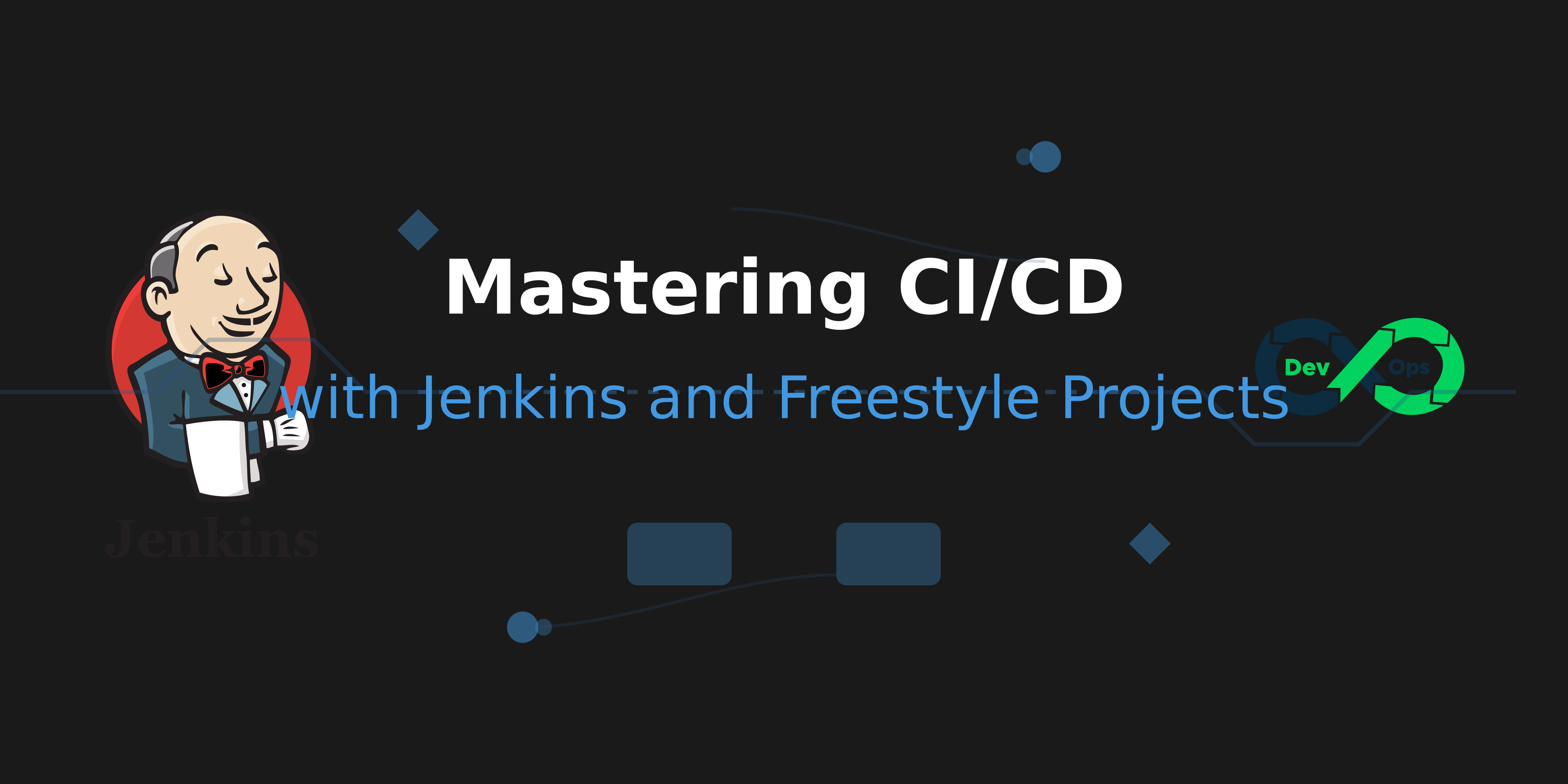Mastering CI/CD with Jenkins and Freestyle Projects
 Kanav Gathe
Kanav Gathe
Introduction
In today's fast-paced software development landscape, Continuous Integration (CI) and Continuous Delivery (CD) are essential practices for maintaining high-quality software delivery pipelines. This technical guide explores how to leverage Jenkins Freestyle Projects to implement robust CI/CD workflows, with a particular focus on Docker integration.
Understanding CI/CD Fundamentals
Continuous Integration (CI)
CI is an automated process that integrates code changes from multiple developers into a shared repository. Key aspects include:
- Automated code building and testing
- Early bug detection and resolution
- Enhanced collaboration among team members
- Rapid feedback loops
Continuous Delivery (CD)
CD extends CI by ensuring that code changes can be reliably deployed to production. Features include:
- Automated deployment pipelines
- Consistent testing environments
- Release automation
- Production-like staging environments
Jenkins Build Jobs: The Foundation
Jenkins build jobs serve as the backbone of automation in CI/CD pipelines. They handle:
- Dependency management
- Code compilation
- Artifact creation
- Testing execution
- Deployment orchestration
Practical Implementation Guide
Task 1: Docker Integration with Jenkins
Setting Up the Jenkins Agent
# 1. Navigate to "Manage Jenkins" → "Manage Nodes and Clouds"
# 2. Click "New Node"
# 3. Configure agent properties:
# - Name: docker-agent
# - Labels: docker
# - Launch method: Launch agent via SSH
Creating the Freestyle Project
# Build step 1: Build Docker image
docker build -t application:${BUILD_NUMBER} .
# Build step 2: Remove existing container
docker rm -f application-container || true
# Build step 3: Deploy new container
docker run -d --name application-container \
-p 8080:80 \
application:${BUILD_NUMBER}
Task 2: Docker Compose Integration
Project Configuration
# docker-compose.yml
version: '3.8'
services:
app:
build: .
ports:
- "8080:80"
database:
image: postgres:13
environment:
POSTGRES_PASSWORD: ${DB_PASSWORD}
Jenkins Build Steps
# Step 1: Deploy services
docker-compose up -d
# Step 2: Verify deployment
docker-compose ps
# Step 3: Cleanup (post-build)
docker-compose down --remove-orphans
Best Practices and Tips
Environment Management
- Use Jenkins credentials store for sensitive data
- Implement environment-specific configurations
- Maintain separate Docker networks per environment
Error Handling
# Example of robust error handling if ! docker-compose up -d; then echo "Deployment failed, rolling back..." docker-compose down exit 1 fiResource Cleanup
- Implement regular cleanup of unused images
- Set up automated container pruning
- Monitor disk space usage
Monitoring and Logging
- Configure Jenkins build notifications
- Implement log rotation
- Set up monitoring for container health
Conclusion
Jenkins Freestyle Projects provide a flexible and powerful way to implement CI/CD pipelines, especially when working with containerized applications. By following these practices and implementations, teams can achieve reliable, automated software delivery processes.
Subscribe to my newsletter
Read articles from Kanav Gathe directly inside your inbox. Subscribe to the newsletter, and don't miss out.
Written by
